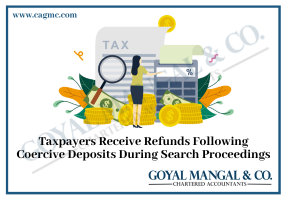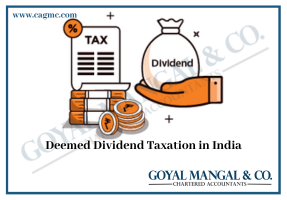
Individuals can save money through numerous types of provident fund (PF) accounts. Furthermore, the income tax laws for PF contribution, withdrawal, and PF income differ based on the kind of PF account. Let us look at the different types of Taxability of Interest on Recognised Provident Fund.
| Table of Contents |
Provident Funds
A provident fund is a government-managed mandated retirement savings plan for employees. Every month, an employee contributes a percentage of his or her pay to the provident fund. In addition, his company makes a payment on his behalf. Month after month, these deposits contribute to the government-managed retirement corpus. It also earns annual compound interest, and at retirement, the employee receives a substantial sum of money at a time when he is most in need of it.
If an employee has a legitimate claim to the PF linked with their company or firm, they will be awarded a Universal Account Number, which will allow them to transfer their PF money from one employer to another if they change jobs. Apart from India, some other emerging nations, such as Singapore, have mandatory provident funds.
Different Kinds of Provident Funds
There are many kinds of provident funds for investing or regular retirement savings. These are their names:
- Statutory Provident Fund – This plan was established by the Provident Funds Act, 1925. It is intended for government personnel, universities, recognised educational institutions, railways, and other similar organisations. It is sometimes referred to as the General Provident Fund (GPF). The government periodically revises the interest rates on general provident funds. Employees in the private sector are not eligible for the general provident fund.
- Recognized Provident Fund – The Provident Fund Act, 1952 applies to all businesses with 20 or more workers. The establishments covered by the plan may apply for the government-approved scheme or construct their own PF scheme by founding a trust. The businesses can participate in the government-approved plan established under the PF Act 1952, which is a recognised provident fund. Alternatively, the employer and employee of the organisation can establish a provident fund plan by creating a trust, and investing assets in accordance with the PF Act, 1952. The plan must be approved by the commissioner of income tax before it can be designated as a recognised provident fund.
- Unrecognized Provident Fund – If the commissioner of income tax does not accept the provident fund scheme by the employer and employee (as indicated above), the system will act as unrecognised.
- Public Provident Fund – For the general public, the government has established a provident fund. Anyone who opens a public provident fund account with an authorised bank can contribute to this plan. Amounts ranging from Rs.500 to Rs.150, 000 can be deposited. After 15 years, the corpus of the PPF can be completely withdrawn.
Taxability of Interest on Recognised Provident Funds
The employee and the employer both contribute to the Provident Fund for the employee’s benefit. Moreover, Section 80C allows for the deduction.
The exemption on the amount added to the provident fund is defined under sections 10(11) and 10(12) of the Income Tax Act, 1961. Furthermore, Section 80C of the Income Tax Act deals with the amount permitted as a deduction for contributions to a provident fund.
Taxability of Interest on Provident Funds
Taxability of Interest on various types of Provident Funds is as Follows:
- Statutory Provident Fund Account
| Particulars | Income Tax Provision |
| Contribution of Employees to the Fund | Section 80C allows for a deduction |
| Contribution of the Employer to the Fund | Tax-free status |
| Interest Earnings | Tax-free status |
| Regarding Retirement | An employee’s lump sum payment is tax-free |
- Recognised Provident Fund Account
| Particulars | Income Tax Provision |
| Contribution of Employees to the Fund | Section 80C allows for a deduction |
| Contribution of the Employer to the Fund | Exemption of up to 12% of salary |
| Interest Earnings | Exemption of up to 9.5% of interest annum |
| Regarding Retirement, Because of the following reasons,
1. Because of illness, 2. With orders that the amount in the RPF be transferred to a new employer 3. As a result of the employer’s business being closed down. or after 5 years of service, retirement |
An employee’s lump sum payment is tax-free. |
| When retiring before 5 years of service and not for any of the reasons listed above | The received lump sum is taxed.
The exemption for employer contributions and interest income will be revoked. |
- Unrecognised Provident Fund Account
| Contribution of Employees to the Fund | – |
| Contribution of the Employer to the Fund | Tax-free status |
| Interest Earnings | Tax-free status |
| Following are the sums paid upon retirement: | Taxes applicable as follows: |
| – Employee contribution | – |
| – Employee contribution interest | Income from other sources is taxable under the heading ‘Income from other sources.’ |
| – Contribution of the employer | Salaries are taxable under the ‘Salary’ heading. |
| – Profit on the employer’s contribution | Salaries are taxable under the ‘Salary’ heading. |
- Public Provident Fund Account
| Particulars | Income Tax Provision |
| Contribution | Section 80C allows for a deduction |
| Interest Earnings | Tax-free status |
Importance of Provident Funds
The Employee Provident Fund was established with the goal of providing financial stability and security to retired employees. Once an employee joins the company, the employer is under obligation to contribute to the provident fund on a regular basis. In this case, both the employer and the employee pay @12% of the employee’s earnings to the Employee Provident Fund.
A provident fund is a tax-free interest account that ensures the steady growth of an employee’s funds. Further, long-term investment in a provident fund helps ensure that an employee’s needs, including his retirement plans, are as per the modern requirements of society.
Endnote
One of the most promising investment options for retirees is a provident fund, which is a tax-free social security system. However, the government has to implement some new rules regarding the interest generated on provident fund amounts, which is now just 8.55 percent, in order to safeguard the future of retirees. Long-term investment of provident funds guarantees that the employee’s needs, especially his retirement plans, meet the requirement of the Employee.







